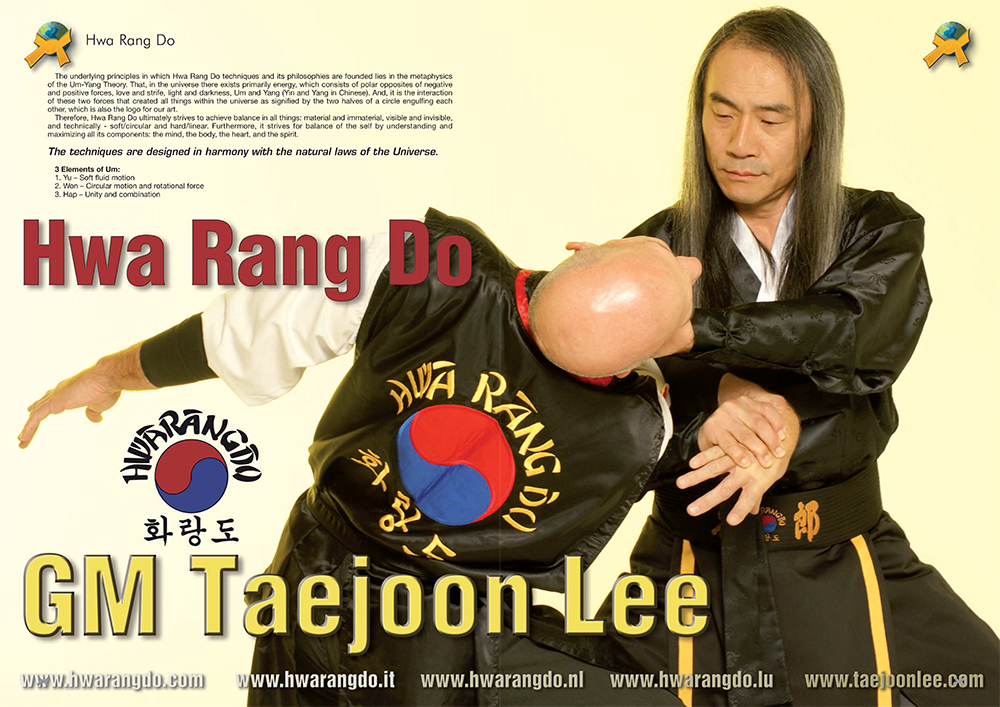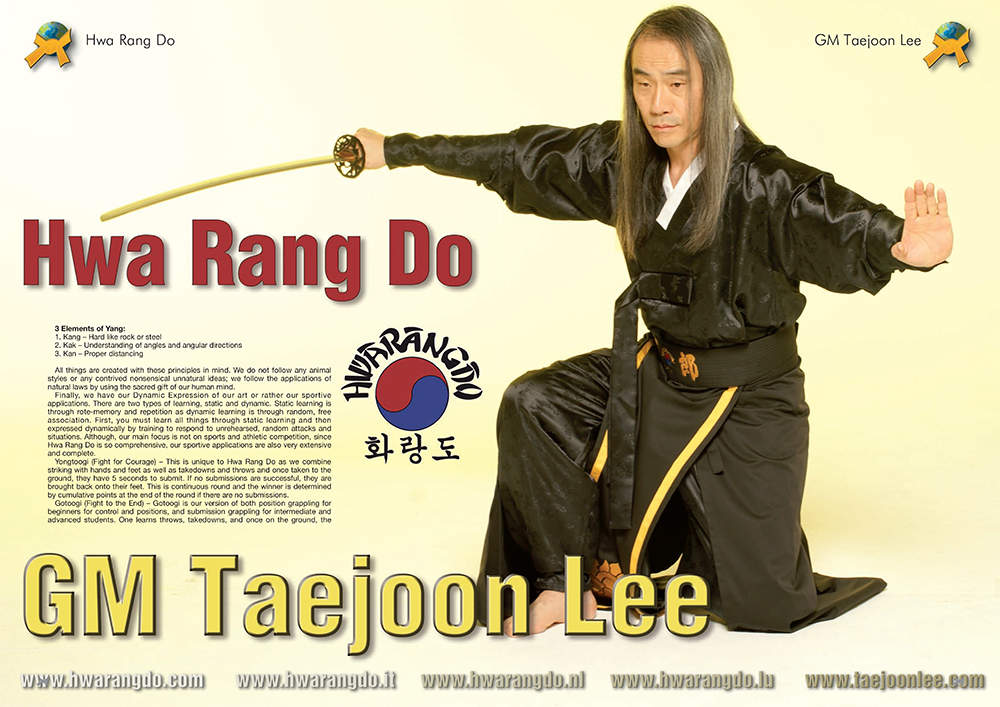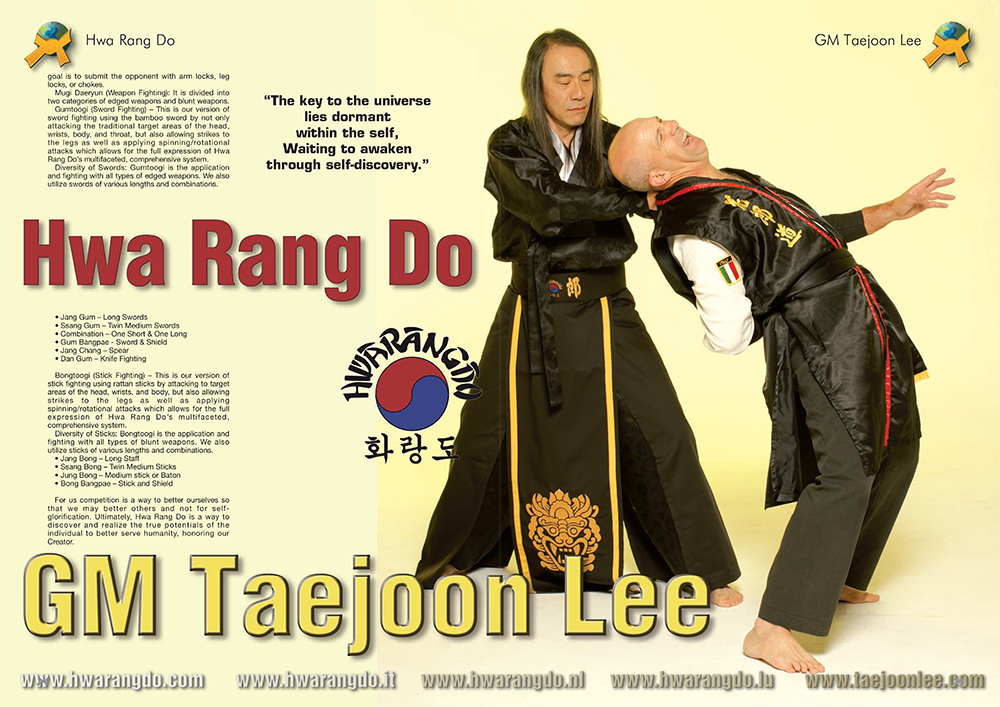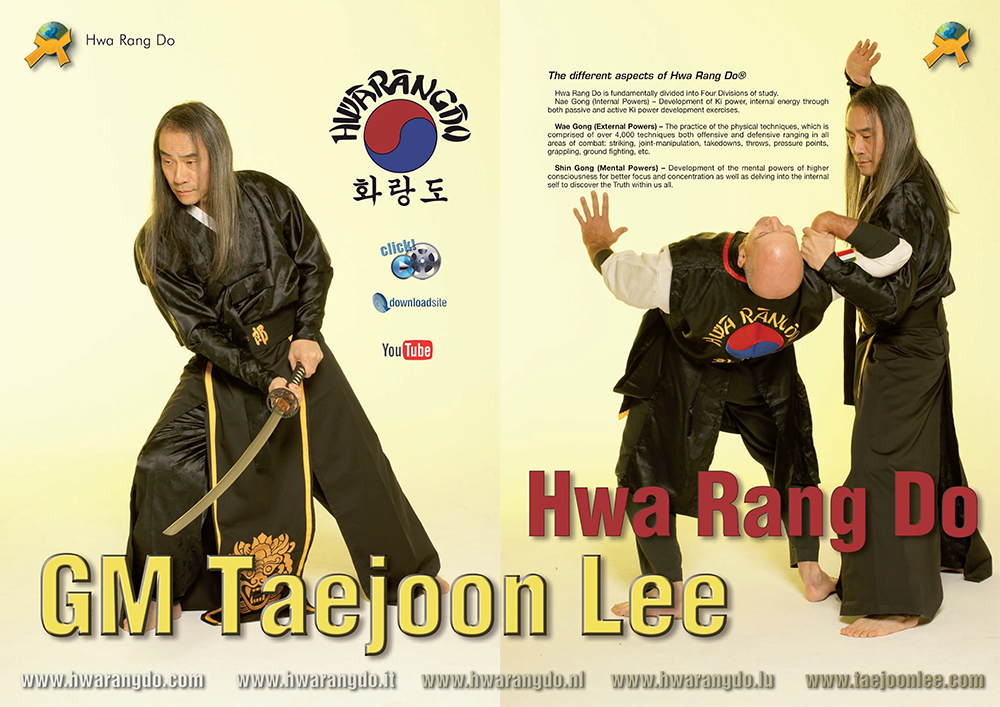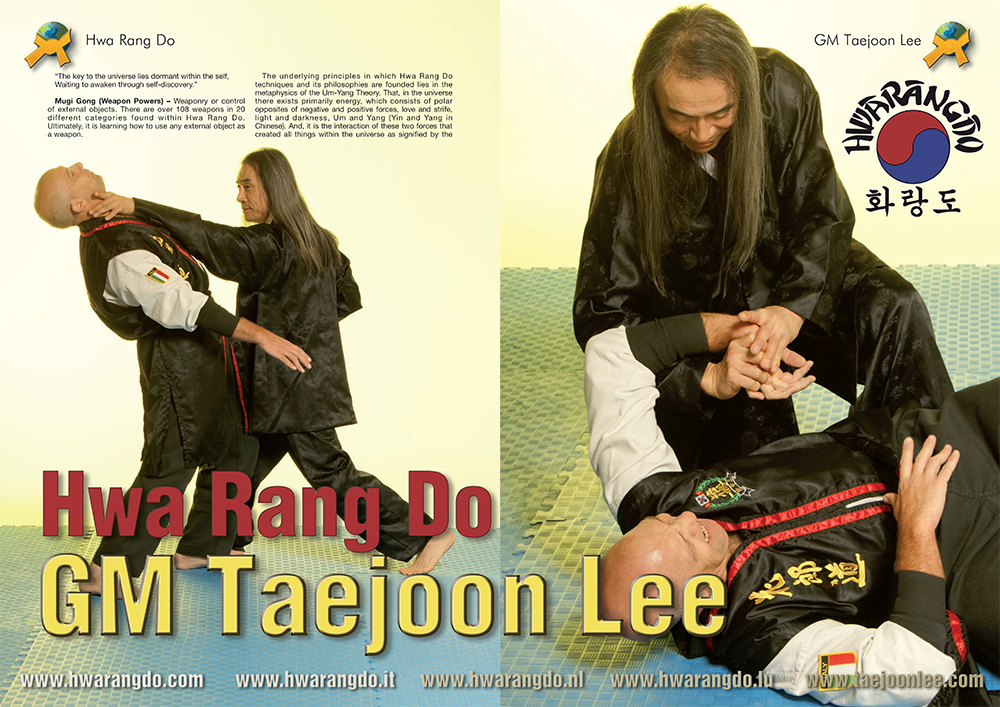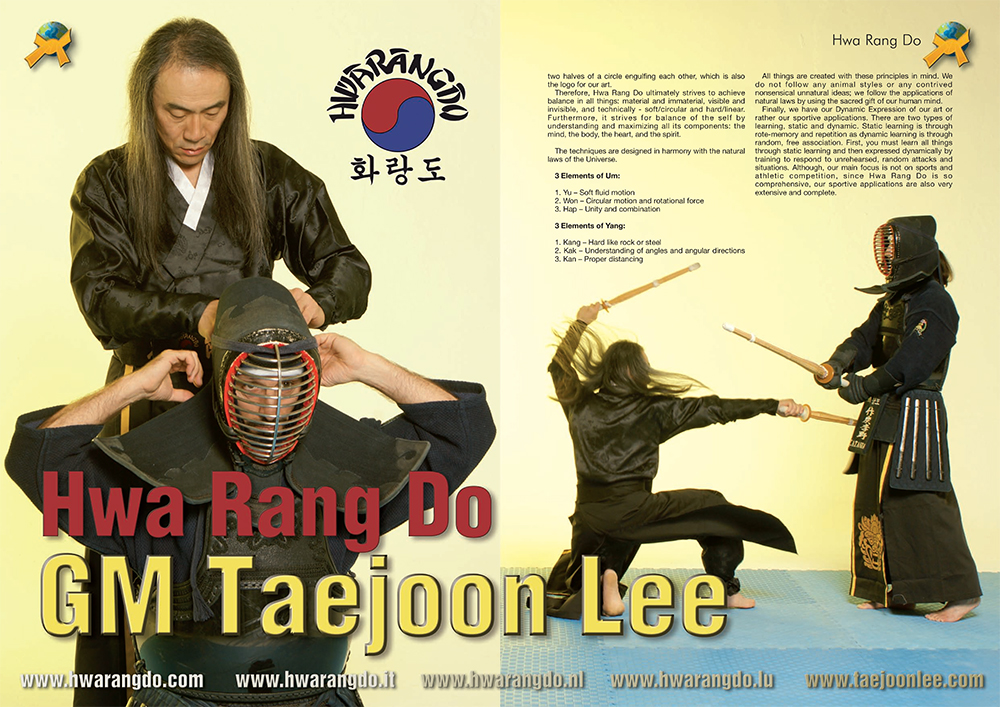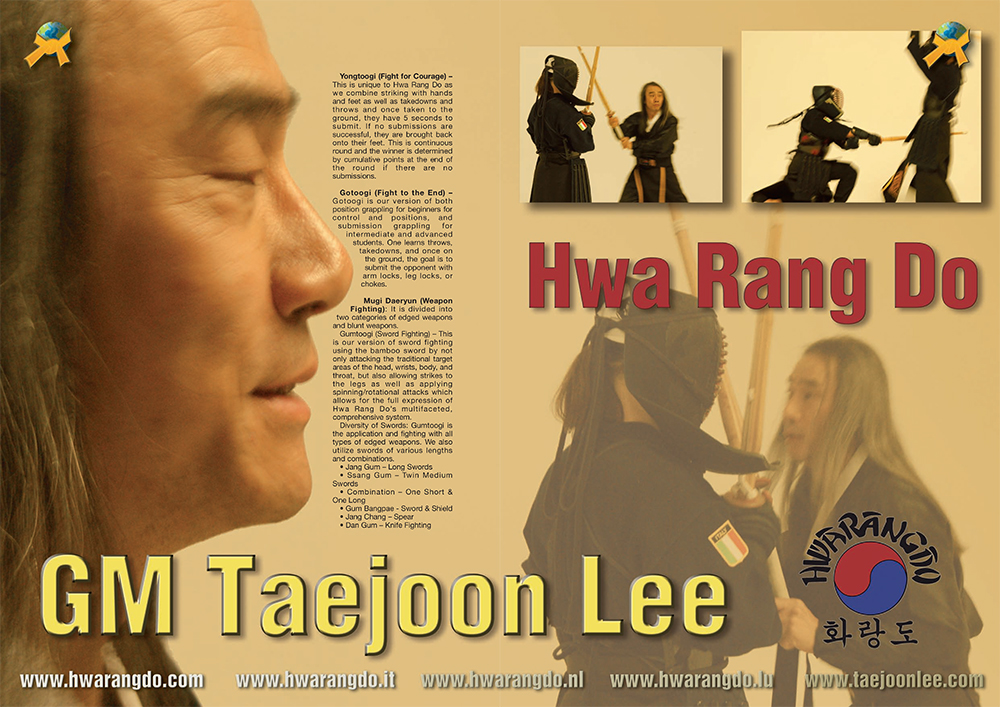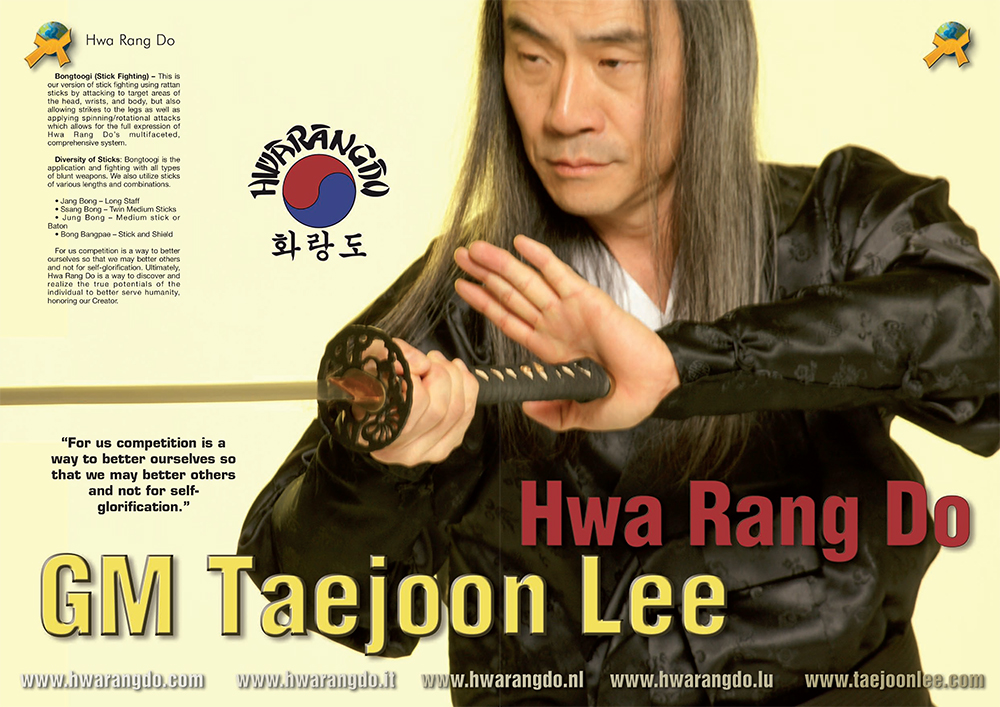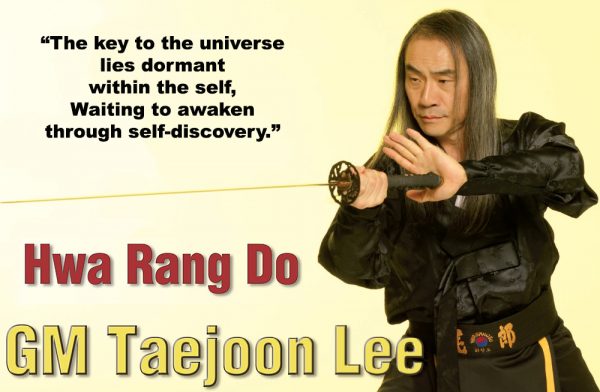Can you please tell me about the different aspects of Hwa Rang Do®?
Hwa Rang Do is fundamentally divided into Four Divisions of study.
Nae Gong (Internal Powers) – Development of Ki power, internal energy through both passive and active Ki power development exercises.
Wae Gong (External Powers) – The practice of the physical techniques, which is comprised of over 4,000 techniques both offensive and defensive ranging in all areas of combat: striking, joint-manipulation, takedowns, throws, pressure points, grappling, ground fighting, etc.
Shin Gong (Mental Powers) – Development of the mental powers of higher consciousness for better focus and concentration as well as delving into the internal self to discover the Truth within us all.
“The key to the universe lies dormant within the self,
Waiting to awaken through self-discovery.”
Mugi Gong (Weapon Powers) – Weaponry or control of external objects. There are over 108 weapons in 20 different categories found within Hwa Rang Do. Ultimately, it is learning how to use any external object as a weapon.
The underlying principles in which Hwa Rang Do techniques and its philosophies are founded lies in the metaphysics of the Um-Yang Theory. That, in the universe there exists primarily energy, which consists of polar opposites of negative and positive forces, love and strife, light and darkness, Um and Yang (Yin and Yang in Chinese). And, it is the interaction of these two forces that created all things within the universe as signified by the two halves of a circle engulfing each other, which is also the logo for our art.
Therefore, Hwa Rang Do ultimately strives to achieve balance in all things: material and immaterial, visible and invisible, and technically – soft/circular and hard/linear. Furthermore, it strives for balance of the self by understanding and maximizing all its components: the mind, the body, the heart, and the spirit.
The techniques are designed in harmony with the natural laws of the Universe.
3 Elements of Um:
- Yu – Soft fluid motion
- Won – Circular motion and rotational force
- Hap – Unity and combination
3 Elements of Yang:
- Kang – Hard like rock or steel
- Kak – Understanding of angles and angular directions
- Kan – Proper distancing
All things are created with these principles in mind. We do not follow any animal styles or any contrived nonsensical unnatural ideas; we follow the applications of natural laws by using the sacred gift of our human mind.
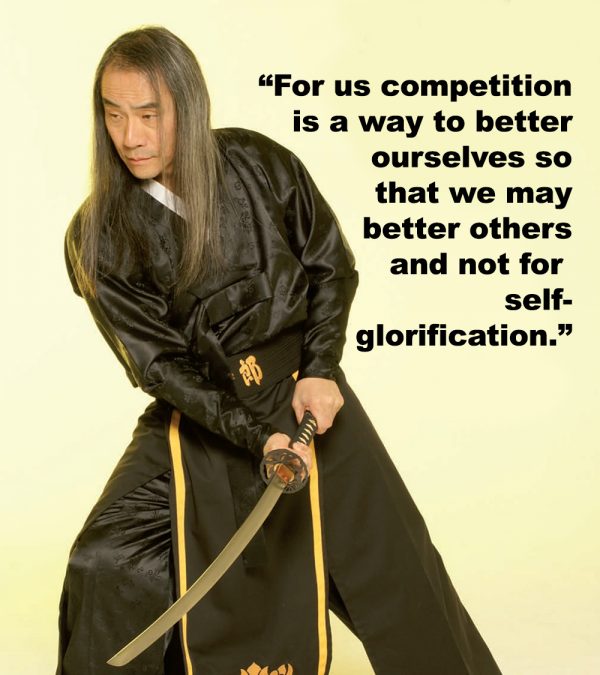
Finally, we have our Dynamic Expression of our art or rather our sportive applications. There are two types of learning, static and dynamic. Static learning is through rote-memory and repetition as dynamic learning is through random, free association. First, you must learn all things through static learning and then expressed dynamically by training to respond to unrehearsed, random attacks and situations. Although, our main focus is not on sports and athletic competition, since Hwa Rang Do is so comprehensive, our sportive applications are also very extensive and complete.
Yongtoogi (Fight for Courage) – This is unique to Hwa Rang Do as we combine striking with hands and feet as well as takedowns and throws and once taken to the ground, they have 5 seconds to submit. If no submissions are successful, they are brought back onto their feet. This is continuous round and the winner is determined by cumulative points at the end of the round if there are no submissions.
Gotoogi (Fight to the End) – Gotoogi is our version of both position grappling for beginners for control and positions, and submission grappling for intermediate and advanced students. One learns throws, takedowns, and once on the ground, the goal is to submit the opponent with arm locks, leg locks, or chokes.
Mugi Daeryun (Weapon Fighting): It is divided into two categories of edged weapons and blunt weapons.
Gumtoogi (Sword Fighting) – This is our version of sword fighting using the bamboo sword by not only attacking the traditional target areas of the head, wrists, body, and throat, but also allowing strikes to the legs as well as applying spinning/rotational attacks which allows for the full expression of Hwa Rang Do’s multifaceted, comprehensive system.
Diversity of Swords: Gumtoogi is the application and fighting with all types of edged weapons. We also utilize swords of various lengths and combinations.
- Jang Gum – Long Swords
- Ssang Gum – Twin Medium Swords
- Combination – One Short & One Long
- Gum Bangpae – Sword & Shield
- Jang Chang – Spear
- Dan Gum – Knife Fighting
Bongtoogi (Stick Fighting) – This is our version of stick fighting using rattan sticks by attacking to target areas of the head, wrists, and body, but also allowing strikes to the legs as well as applying spinning/rotational attacks which allows for the full expression of Hwa Rang Do’s multifaceted, comprehensive system.
Diversity of Sticks: Bongtoogi is the application and fighting with all types of blunt weapons. We also utilize sticks of various lengths and combinations.
- Jang Bong – Long Staff
- Ssang Bong – Twin Medium Sticks
- Jung Bong – Medium stick or Baton
- Bong Bangpae – Stick and Shield
For us competition is a way to better ourselves so that we may better others and not for self-glorification. Ultimately, Hwa Rang Do is a way to discover and realize the true potentials of the individual to better serve humanity, honoring our Creator.
